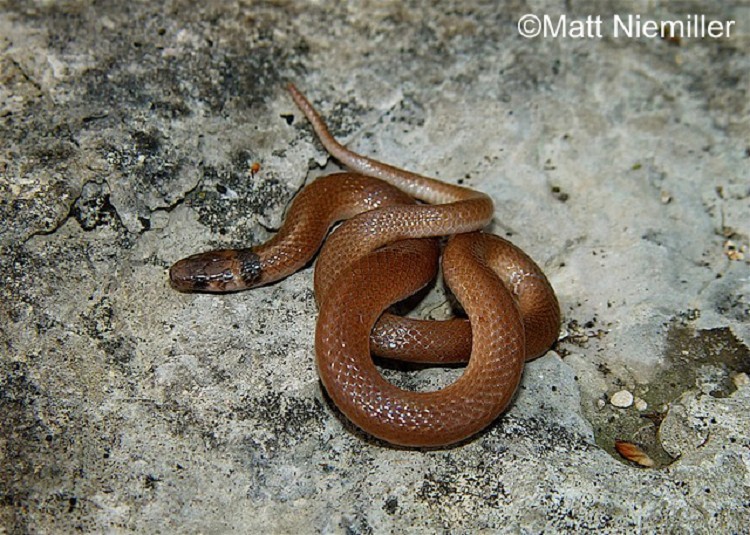Southeastern Crowned Snake, Tantilla coronata
Th Southeastern Crowned Snake is a secretive, black-capped snake and occurs across the southern two-thirds of the state plus Stewart County.
Description: A slender, very small snake (8.0 to 10.0 inches in length) with smooth scales and a black head. A light-colored band occurs on the neck separating the black head and black neck band. The body is light brown to reddish brown. Belly is white, light pink, or yellowish. Young resemble adults.
Similar Species: Midland Brownsnake and Red-bellied Snake both lack a black band on the back of the neck and have keeled scales. Ring-necked Snake has a bright yellow belly.
Habitat: Frequently found in sandy-soiled areas, pine forests, hardwoods, and swamps. Southeastern Crowned Snakes are mainly burrowers living beneath rocks, woody debris, leaf litter, and other debris.
Diet: Prefers centipedes and insect larvae; but also earthworms, spiders, termites, and snails.
Breeding information: Adults usually breed in spring, but can breed in summer and fall. Females lay 1-3 eggs underground or beneath cover during the summer. Young hatch in the fall.
Status in Tennessee: Uncommon, but can occur in high numbers. Not protected in the state.
Fun Facts:
- Southeastern Crowned Snakes have small rear fangs in the upper jaw, which they use to inject venom into insect prey. These fangs do not pose a threat to humans, especially since these snakes do not bite when captured.
Best places to see in Tennessee: Sandy-soiled forests in the southwestern or southeastern part of the state.
